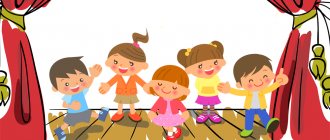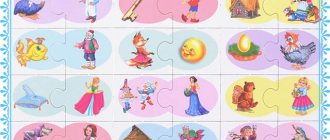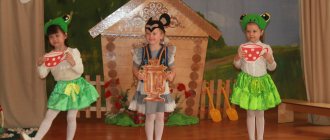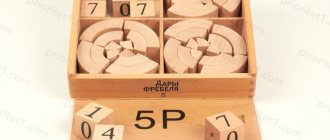Relevance, purpose and objectives of theatrical activities in preschool education.
Theatrical activity is a source of development of feelings, deep experiences of the child, and introduces him to spiritual values. It is equally important that theatrical games develop the emotional sphere and make one sympathize with the characters. Theatrical activities permeate all routine and educational moments.
The basis of this work lies in the use of nursery rhymes, sayings, jokes, and lullabies. Oral folk art, presented in the form of skits and dramatization games, creates an atmosphere of warmth, kindness, attention, and contributes to the formation of an emotionally positive attitude of children to the world around them and their cognitive development.
Theatrical activities develop the child’s personality, instill a sustainable interest in literature and theater, improve children’s artistic skills in terms of experiencing and embodying an image, and encourage them to create new images.
Thanks to this form of work, communication with children becomes more interesting and meaningful. It is no secret that young children perceive speech addressed to them better if it is supported by visual objects (pictures, toys).
During development, changes occur in the emotional sphere of the child. His views on the world and relationships with others change. The child's ability to recognize and control his emotions increases. But the emotional sphere itself does not develop qualitatively. It needs to be developed.
Being confined to televisions and computers, children began to communicate less with adults and peers, but communication greatly enriches the sensory sphere. Children today have become less responsive to the feelings of others
Theatrical activities in kindergarten can organizationally permeate all routine moments: be included in all classes, in the joint activities of children and adults in their free time, and carried out in children’s independent activities. Theatrical activities can be organically included in the work of various studios and clubs; products of theatrical activities (stage plays, dramatizations, performances, concerts, etc.) can be included in the content of holidays and entertainment.
Thus, theatrical activity is the most important means of developing in children the ability to recognize a person’s emotional state by facial expressions, gestures, intonation, the ability to put oneself in his place in various situations, and find adequate ways to help. Theatrical activities make it possible to develop the experience of social behavioral skills due to the fact that every literary work or fairy tale for preschool children always has a moral orientation (friendship, kindness, honesty, courage, and others). Theatrical activities are a source of development of feelings, deep experiences and discoveries of the child, introducing him to spiritual values. Theater reveals the spiritual and creative potential of the child and provides a real opportunity to adapt to the social environment.
The role of puppet theater in the upbringing and development of a child
The role of puppet theater in the perception and development of a child
Theater and festive and joyful performances bring enormous, incomparable joy to children. Preschoolers are very impressionable, they are especially susceptible to emotional influence. Due to figurative and concrete thinking, the theatricalization of works of art helps them to perceive the content of these works more clearly and correctly.
Puppet theater is the most common form of organizing children's leisure in kindergarten. Puppet shows enjoy the well-deserved love of children and bring great pleasure to the organizers of the productions. The doll itself is very close to children’s perception, because they have been familiar with this toy since early childhood, and therefore perceive it as a close friend. And if this hitherto silent friend unexpectedly comes to life before their eyes, tells stories, sings, laughs and cries - this spectacle turns into a real holiday for them.
However, puppet theater cannot be considered only as entertainment. Its educational and cognitive significance is very important. During the preschool period, the child begins to develop an attitude towards the environment, character, and interests. It is at this age that it is very useful to show children examples of friendship, kindness, truthfulness, and hard work.
The role of puppet theater in the development of a preschool child cannot be overestimated. First of all, a doll helps to establish contact with a child if he is “enslaved,” emotionally “stressed,” or afraid of strangers. A small doll causes less fear and apprehension, and a child, especially a younger one, makes contact with it faster than with an adult. Children who avoid touching are more likely to give a hand and say hello to a doll than to a teacher. By actively interacting with the doll, the child gradually becomes more open and courageous in direct contacts with the outside world, with people. This allows a preschool child to most painlessly go through the period of adaptation to school, new teachers, curriculum, and often to a new children's team.
Emotions, or feelings, play an important role in the lives of children. Positive emotions - pleasure, joy - increase the child’s activity, his receptivity, have a beneficial effect on the course of all physiological processes in the body, and improve health. Therefore, it is so important that a preschooler’s mood be predominant. The main source of pleasure and joy is the active activity of the child, communication with adults and children close to him.
Impressions of early childhood remain in memory for a long time. Theater in a child’s life is not a rare phenomenon in the modern world. It’s great if children and their parents not only go to a professional theater, but also when amateur children’s theater becomes part of the daily life of a child attending a preschool institution. Teachers do a great deal of creative work with their little spectators, involving them in various theatrical performances and concerts, creating a real holiday for them. In the theater lobby you can see an exhibition of children's drawings, models of performances, and fairy-tale characters. The theater combines all types of art, which makes it possible to talk with children not only about its history, but also about painting, architecture, the history of costume and decorative arts. But the most important thing is the celebration, the emotional outburst, the delight of participating in the performance. With a child of two or three years old you can have quite an interesting and, what is important, useful time. The basis of the puppet theater's repertoire is a fairy tale - folk and literary, Russian and foreign. This is a real fairy-tale country, where children are treated to wonderful, childishly naive, touching and kind fairy tales - puppet shows with games, starting from the very entrance to the theater, because communication with the mysterious world of puppets requires additional preparation.
Finger Theater
Author:
Rukan Natalya Valerievna,
teacher
second qualification category
MADO kindergarten No. 73 in Tyumen
Finger theater is a set of character figures that are put on a separate finger. These can be just individual dolls, animals, some objects for staging a fairy tale, or well-known characters from our favorite Russian folk tales. The Finger Theater is a unique opportunity to place a fairy tale on the palm of a child, in which he can take the role of any hero. A child can put any character on his finger and play. It is very important, when playing, to address the child, including him in the game. Theater is also an excellent speech and sensory-motor simulator. Dolls develop the mobility of the fingers of both hands, help master the speech of characters, help develop vocabulary and activate speech functions.
The finger theater is intended for children from 3 to 7 years old.
Goal: to develop fine motor skills of the hands in combination with speech; development of communicative abilities of preschool children in the process of finger theater.
Objectives: Teach children to act out small plays, skits, fairy tales using finger theater;
Develop: speech, thinking, memory, attention, creative imagination; enrich vocabulary;
Evoke positive emotions; instill a sustainable interest in the theater;
Description : knitted, sewn hero dolls, decorations.
Preparation: Set up the scenery, assign roles.
Variability of use:
-Learning nursery rhymes;
-Dolls can be used for acquaintance and learning to count (for example, in the fairy tale “Teremok” a mouse, a frog, and a hare began to live together, then a fox came and there were four of them); to get acquainted with the characters and plot of a fairy tale, to get acquainted with the concepts of “right - left”, “next to each other”;
- Acting out fairy tales: “Turnip”, “Teremok”, “Kolobok”, “Ryaba Hen”...;
-Come up with your own fairy tale;
-Guess the hero;
- “Who says what” (onomatopoeia);
- “The world of emotions” (sadness, joy, anger, surprise);
- “Name what color is the hero?” (gingerbread man - yellow, fox - orange, mouse - gray).
Finger theater and games with fingers develop the child’s brain, stimulate the development of speech, creativity, and imagination of the baby. Simple movements help to remove tension not only from the hands themselves, but also to relax the muscles of the whole body. They can improve the pronunciation of many sounds. The better the fingers and the entire hand work, the better the child speaks.
Dear teachers and parents - participants of the exhibition!
On June 2, 2015, a solemn ceremony of awarding the winners of the regional methodological exhibition “Modern educational environment of kindergarten and family” took place at the information and exhibition complex of the Tyumen Regional Duma. Details >>>
From June 8 to June 10, 2015, teachers from Tyumen received certificates of exhibition participants and multimedia albums with the full version of the exhibition at the Grant Center for the Development of Creativity for Children and Youth at the address: Profsoyuznaya St., 52. tel. for inquiries: 685-321,
June 9, 2015 Diplomas, certificates and gifts were sent to the winners and participants of the Exhibition of the south of the Tyumen region, Yamal-Nenets Autonomous Okrug and Khanty-Mansi Autonomous Okrug-Yugra by registered parcel post to the address of the preschool educational institution. Details >>>
Share
Kindergarten "Kalinka", Volgodonsk
Puppet theater is the most common form of organizing children's leisure in kindergarten. Puppet shows enjoy the well-deserved love of children and bring great pleasure to the organizers of the productions. The doll itself is very close to children’s perception, because they have been familiar with this toy since early childhood, and therefore perceive it as a close friend. And if this hitherto silent friend unexpectedly comes to life before their eyes, tells stories, sings, laughs and cries - this spectacle turns into a real holiday for them.
However, puppet theater cannot be considered only as entertainment. Its educational and cognitive significance is very important. During the preschool period, the child begins to develop an attitude towards the environment, character, and interests. It is at this age that it is very useful to show children examples of friendship, kindness, truthfulness, and hard work.
The role of puppet theater in the development of a preschool child cannot be overestimated. First of all, a doll helps to establish contact with a child if he is “enslaved,” emotionally “stressed,” or afraid of strangers. A small doll causes less fear and apprehension, and a child makes contact with it faster than with an adult. Children who avoid touching are more likely to give a hand and say hello to a doll than to a teacher. By actively interacting with the doll, the child gradually becomes more open and courageous in direct contacts with the outside world, with people. This allows a preschool child to most painlessly go through the period of adaptation to school, new teachers, curriculum, and often to a new children's team.
Children of the fifth and sixth year of life, as a rule, already know and love puppet theater and participate with great desire in performances. The teacher is faced with the task of encouraging preschoolers to engage in independent theatrical games and to dramatize familiar literary works. Children of this age can already be taught to drive dolls - parsleys and puppets.
Theater is one of the brightest, most colorful and accessible spheres of art for a child. It brings joy to children, develops imagination and imagination, contributes to the creative development of the child and the formation of the basis of his personal culture. In terms of aesthetic significance and influence on the overall development of a child, theatrical activities rightfully have a place of honor next to music, drawing and modeling.
While playing a role, a child can not only imagine, but also emotionally experience the actions of his character. This certainly affects the development of the preschooler’s senses. Aesthetic experiences help the child to experience admiration for those manifestations of life that he had not previously noticed, and to convey them through movements, gestures, facial expressions and other means of expressiveness.
According to the famous psychologist A.N. Leontiev, “a developed dramatization game is already a kind of “pre-aesthetic” activity. Dramatization play is, therefore, one of the possible forms of transition to productive, namely aesthetic activity with its characteristic motive of influencing other people.”
There are four types of puppet theater: tabletop, finger, puppet theater like Parsley, marionette theater.
Tabletop theater is the most accessible type of theater for preschoolers. Children of this age show initial mastery of the director's theatrical game - tabletop toy theater.
The Finger Theater is a theater of actors who are always with us. All you have to do is put the hero on your finger. The child himself acts for the character depicted on his hand. As the action progresses, the child moves one or more fingers, pronouncing the text of a fairy tale, poem or nursery rhyme.
In the Bibabo theater, glove-type puppets are used: a doll, hollow inside, is put on the hand, while the index finger is placed in the head of the doll, and the thumb and middle finger are placed in the sleeves of the suit. The remaining fingers are pressed against the palm.
By doing theater with children, we make the life of our students interesting and meaningful, filling it with vivid impressions and the joy of creativity. And the most important thing is skills. Children will be able to use the information obtained in theatrical games in everyday life.





